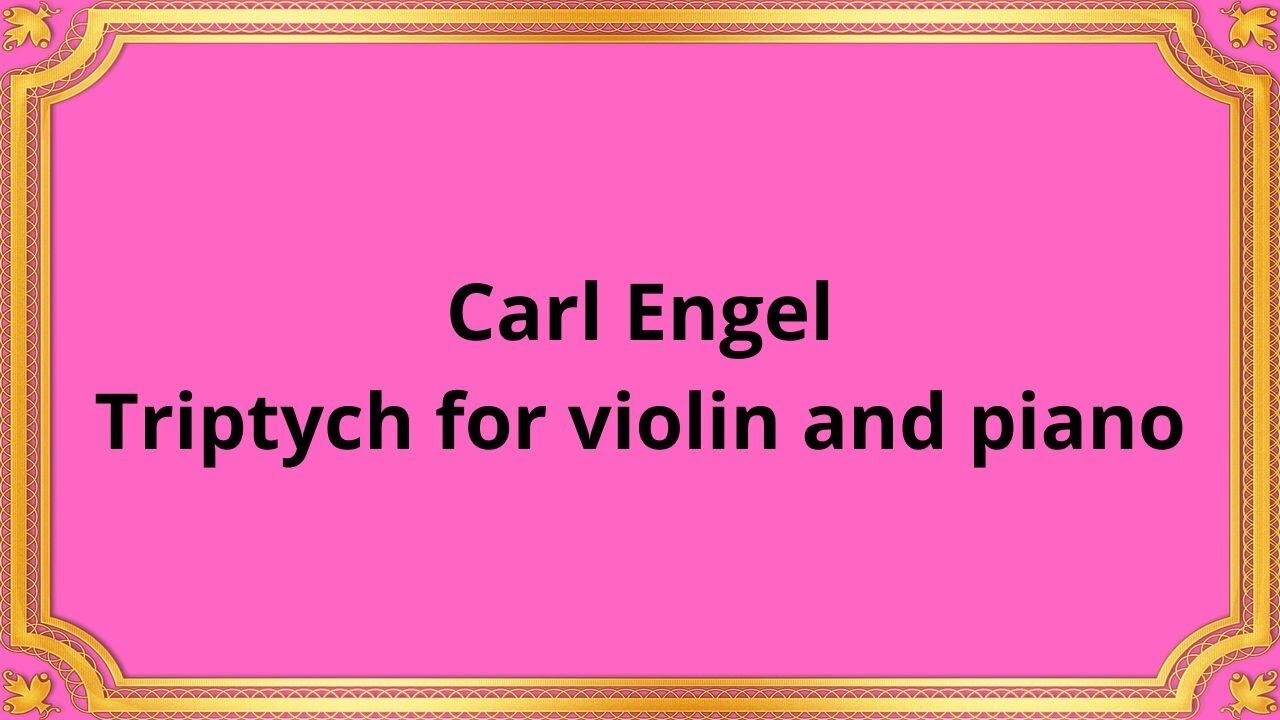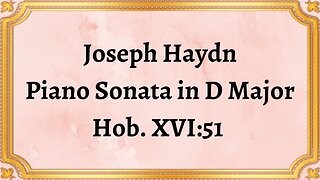Premium Only Content

Carl Engel Triptych for violin and piano
#CarlEngel #Triptych #ViolinandPiano #ClassicalMusic #MusicalComposition #ChamberMusic #RomanticEra #Romanticism #Violinist #Pianist #MusicPerformance #MusicAppreciation #MelodicBeauty #MusicHistory #MusicEducation
Publication date 1941
William Kroll (violin)
Frank Sheridan (piano)
Carl Engel's Triptych for Violin and Piano is a mesmerizing musical composition that showcases the composer's talent and creativity. This chamber music piece, written during the Romantic era, captivates listeners with its emotive melodies, intricate harmonies, and delicate interplay between the violin and piano.
Carl Engel, a composer and pianist of the 19th century, was known for his contributions to American musical education and advocacy for classical music. Engel's Triptych for Violin and Piano stands as a testament to his skill in composing chamber music, blending elements of Romanticism with his unique artistic voice. This composition highlights Engel's ability to evoke deep emotions and create a musical narrative through his intricate composition style.
The Triptych for Violin and Piano is divided into three movements, each offering a distinct musical experience while maintaining an underlying thematic connection.
1. Movement I: The opening movement sets the tone for the composition, introducing the listener to a world of lyrical beauty and expressive melodies. The violin and piano engage in a delicate dance, sharing melodic motifs and intertwining their voices in a harmonious dialogue. Engel's use of dynamic contrasts and melodic variations adds depth and intrigue to this initial movement.
2. Movement II: The second movement takes a contrasting approach, presenting a more introspective and contemplative atmosphere. The violin takes on a melancholic role, leading the listener through a musical journey filled with emotional nuances. The piano provides a sensitive and supportive backdrop, evoking a sense of longing and introspection. Engel's skillful use of phrasing and harmonic color adds to the depth of this movement.
3. Movement III: The final movement serves as a vibrant and energetic conclusion to the Triptych. It showcases Engel's ability to create lively and spirited musical passages, highlighting the virtuosic capabilities of the violin and piano. The interplay between the two instruments becomes more intricate, creating a sense of exhilaration and anticipation. This movement showcases Engel's ability to balance technical prowess with musical expression.
Engel's Triptych for Violin and Piano holds significant artistic value within the realm of chamber music. Its blend of Romantic sentiment and sophisticated composition techniques makes it a captivating and rewarding experience for performers and listeners alike. The piece requires technical proficiency and interpretive sensitivity from both violinists and pianists, offering a rich musical landscape to explore.
Conclusion:
Carl Engel's Triptych for Violin and Piano stands as a testament to the composer's artistic vision and mastery of chamber music composition. Through its three movements, this composition weaves a tapestry of emotive melodies, intricate harmonies, and delicate interplay between the violin and piano. Engel's ability to evoke deep emotions and create a musical narrative demonstrates his significant contribution to the world of classical music. The Triptych continues to captivate audiences, offering a testament to the enduring appeal of Engel's artistic legacy.
You have the opportunity to support the channel:
https://destream.net/live/RadSiarAl/donate
https://www.buymeacoffee.com/6355radsiaral
-
 6:07
6:07
Classical music_Music Inspiration
3 months agoJoseph Haydn Piano Sonata in D Major, Hob. XVI:51
1301 -
 36:50
36:50
Uncommon Sense In Current Times
12 hours agoHomicide Detective Finds God While Investigating True Crime | J. Warner Wallace
47910 -
 1:00:51
1:00:51
Trumpet Daily
19 hours ago $2.93 earnedAmerica’s Shameful Foreign Policy - Trumpet Daily | Apr. 24, 2025
6.85K9 -
 17:18
17:18
VSOGunChannel
15 hours ago $0.05 earnedDNT HYDRA- A Thermal Sight You Can Actually Afford
5.74K3 -
 10:10
10:10
Mrgunsngear
12 hours ago $6.12 earnedNew Trijicon MRO SD - The Best American Made Red Dot Optic?
44.5K11 -
 13:42
13:42
SantaSurfing
16 hours ago4/24/2025 - Part 1 on Endless Frontiers Efficient & Powerful Tesla Homes! Revolutionary!
53.9K54 -
 12:19
12:19
T-SPLY
18 hours agoDemocrats Start Economic War With El Salvador!
42.1K38 -
 3:14:44
3:14:44
TimcastIRL
11 hours agoDemocrat RAIDED After He's CAUGHT Harboring TERRORIST TdA Member, Wife ARRESTED
225K202 -
 2:42:29
2:42:29
RiftTV/Slightly Offensive
12 hours ago $25.42 earnedBabylon Bee Mocks Christianity in Con Inc War on "Christ is King" | Guest: Pastor Joel Webbon
86K85 -
 2:17:31
2:17:31
Laura Loomer
10 hours agoEP117: GOP Lets Radical Muslims Take Over Texas
54.5K81